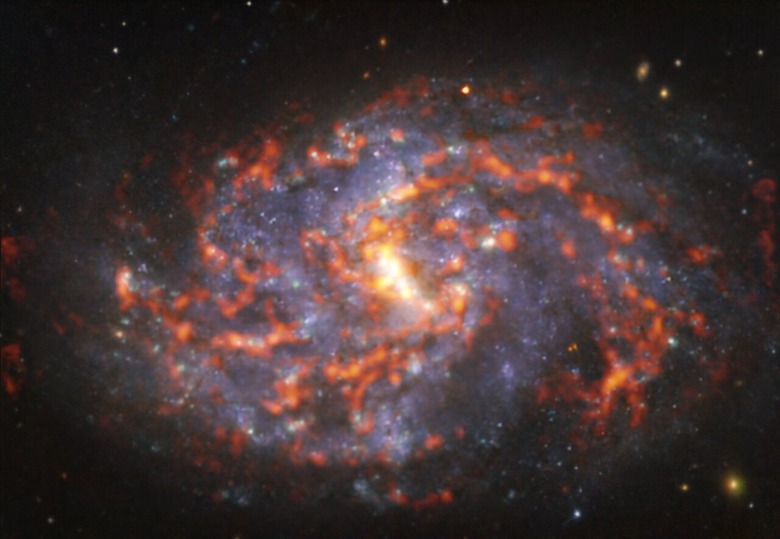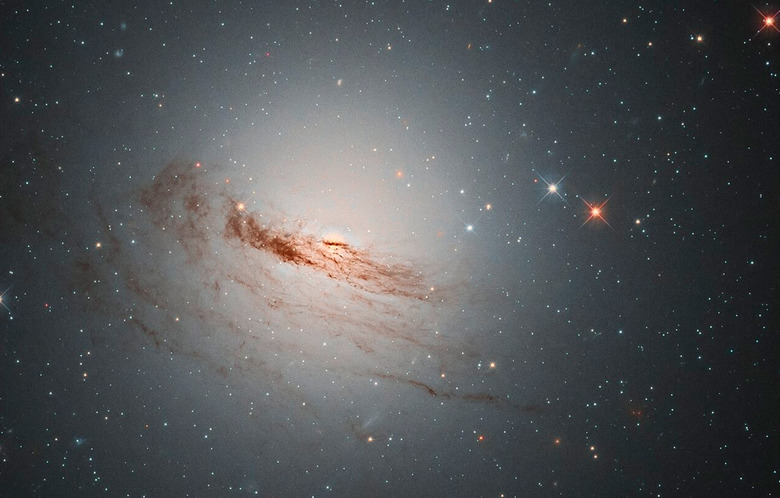Stunning ALMA Image Shows A Snake-Like Galaxy 80 Million Light-Years Away
The European Southern Observatory's Very Large Telescope (VLT) and Atacama Large Millimeter/submillimeter Array (ALMA) have imaged a snake-like galaxy. Scientists named the galaxy NGC 1087, and it is swirling through space almost 80,000 light-years from our planet.
ALMA’s image of this snake-like galaxy is breathtaking
The snake-like galaxy spans over 86,800 light-years across. It can be found within the constellation Cetus. This particular part of the sky is home to several other water-themed constellations, too, such as Pisces and Aquarius. It isn't the largest galaxy we have discovered but, it's still impressive.
They created the main image by combining multiple images from ALMA and the Multi-Unit Spectroscopic Explorer on the ESO's VLT. This allowed the ESO to create an image that showcases the full galaxy, along with the cold clouds of star-spawning gas that surrounds it. Additionally, the areas tinted with blue represent older stars that are more mature.
Scientists captured the shots as part of a conjunctive project called the Physics at High Angular Resolutions in Nearby Galaxies Survey, or PHANGS. The team assigned scientists to help deliver a catalog of high-resolution observations of nearby galaxies while using telescopes that target a wide range of different wavelengths. This snake-like galaxy is just one that the team has seen.
And ALMA is perfect for capturing images of galaxies like this because of how high up it is. The observatory is located at an altitude of 5,000 meters (16,500 feet) in Chile. As such, it has an excellent vantage point for the 66 radio telescopes the observatory is equipped with.
Understanding galaxy types
While the snake-like galaxy is intriguing, it's just one of millions of galaxies out there. And, while its shape is unique, it ultimately falls under one of the most common categories of galaxies: spiral. Spirals are by far the most common type of galaxy we have discovered thus far. However, there are at least four primary categories of galaxies.
The primary categories of galaxies include elliptical, spiral, barred spiral, and irregular. And we've discovered galaxies of each type of galaxies throughout the universe. And I'm sure to find more as we search through the stars.
Additionally, because ALMA and the VLT can capture different wavelengths, scientists hope to learn more about the internal physical properties of galaxies. Comparing results from multiple readings can help astronomers better understand the cosmos, including the snake-like galaxy NGC 1087.


